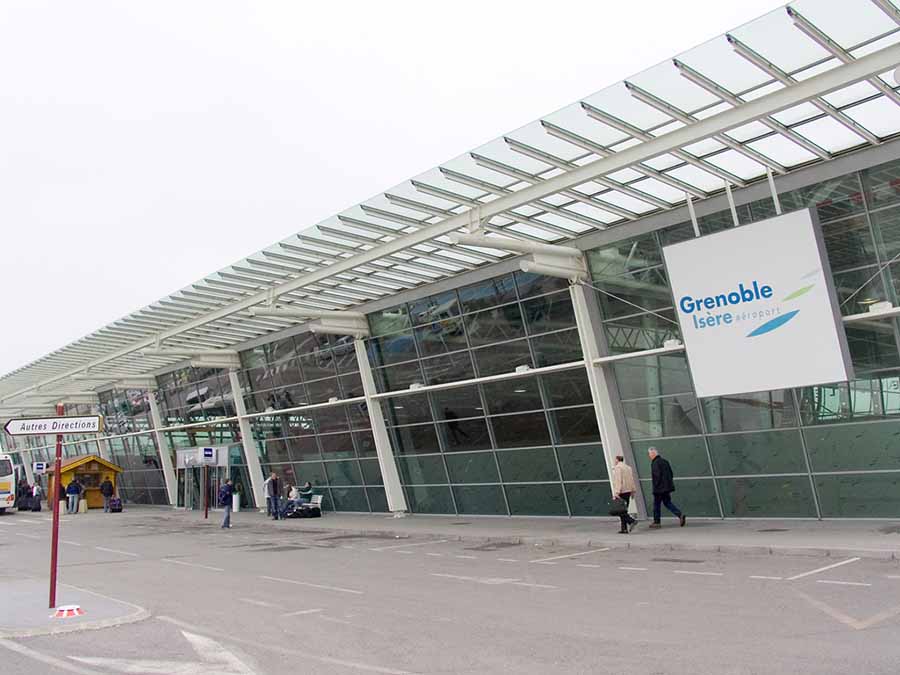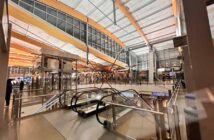
Grenoble Alpes Isère Airport (GNB), located 40 kilometres northwest of Grenoble, serves as a key entry point for travellers heading to the French Alps, particularly ski resorts like Alpe d’Huez and Les Deux Alpes. Handling around 400,000 passengers annually, this small international airport, operated by VINCI Airports, focuses on seasonal winter flights, connecting to destinations like London, Birmingham, and Copenhagen via airlines such as Ryanair, easyJet, and Jet2. Its compact terminal and straightforward operations make it a convenient choice for those exploring the Rhône-Alpes region.
The passenger experience at Grenoble Airport is functional, though it can feel strained during peak times. The single terminal, rebuilt in 2002, processes up to 1,800 passengers per hour across three boarding areas and 26 check-in desks. Arrivals often involve disembarking onto the tarmac and walking or taking a short bus to the terminal, a simple process despite occasional crowding. Check-in, supported by self-service kiosks, is generally efficient, but kiosks can take 10–15 seconds to load, and some travellers report long queues due to limited staffing.
Security screening, with only three to four lanes, can take 20–45 minutes during busy periods, and passengers must remove liquids and electronics. Staff are courteous, and a dedicated assistance service for those with reduced mobility, bookable 48 hours in advance, includes priority access via a “Fast Lane” system and support from blue call points at the terminal and car park.
Accessing the airport is straightforward, with good transport links to Grenoble and nearby ski resorts. The A48 motorway connects directly to the airport, with a 30–40-minute drive from Grenoble’s city centre via the Rives exit onto the D119 road. Actibus operates seasonal shuttle buses (December–March) to Grenoble’s train and coach stations, taking 45–50 minutes for €12.60, with schedules aligned to flight times. Private ski transfer services, such as those listed on Snowcompare, connect to resorts like Les Deux Alpes in about 1.5 hours, with fares starting at €30 per person for shared shuttles.
Taxis, available outside arrivals, cost €60–€80 to Grenoble, while car hire desks from Avis, Europcar, Hertz, and Sixt are located in the terminal, with 500 parking spaces and 60 coach spaces directly outside. Public transport is limited after 8 pm and weekend road traffic on the A48 can slow travel, so extra time is advised.
The airport’s layout is compact, with a single terminal split into arrivals on the ground floor and departures on the first floor. Three boarding lounges and two arrival areas keep movement simple, though digital flight information is limited, and there are no tannoy announcements, requiring passengers to check monitors frequently. The terminal’s design supports easy navigation, with ramps and lifts ensuring accessibility, but seating is scarce during peak winter weekends when passenger volumes exceed capacity. Recent upgrades have improved passenger flow, but construction on additional security lanes can add to congestion.
Delays are a concern during the winter season, particularly on Saturdays, when the airport handles up to 20 flights compared to one on weekdays. Average delays range from 30–40 minutes, often due to insufficient staffing, limited security lanes, or French air traffic control strikes. Weather conditions, such as fog or strong winds, can further disrupt schedules, especially for departures. On-time performance is stronger midweek, but travellers should arrive 90 minutes early for Schengen flights and two hours for non-Schengen to account for queues.
Dining and retail options are limited but adequate for a small airport. A first-floor restaurant serves basic meals and snacks, open according to flight schedules, while a landside Relay newsstand and airside duty-free and souvenir shops offer travel essentials and local gifts. No 24-hour dining is available, and options for special diets are minimal, so passengers may need to bring their own food. Shops operate from 6 am. to 8 pm with vending machines as a backup. A VIP lounge, accessible for a fee, provides seating, snacks, and Wi-Fi, though it’s basic compared to larger airports.
Facilities cater to essential needs. Free Wi-Fi is available but requires registration, and connectivity can be unreliable. ATMs are present, but no currency exchange is offered, so passengers should exchange money in Grenoble. Accessible toilets, a mailbox, and a children’s play area are available, and guide dogs are permitted with 48-hour notice to airlines. The information desk in the departure hall assists with queries, but hours are not always clear. Overnight stays are prohibited, with the airport closing at 10 pm and nearby hotels are recommended for layovers.
Connections are minimal, as Grenoble primarily serves point-to-point seasonal flights rather than acting as a transfer hub. The minimum connection time is 35 minutes, but self-transfers require clearing security and immigration, which can take over an hour during busy periods. Popular routes to London and Manchester are frequent, but passengers should allow a two-hour buffer to avoid missing flights due to long queues or weather-related delays.
Grenoble Alpes Isère Airport offers a practical entry to the French Alps, with its compact size and ski-focused transport links ensuring a manageable experience. While winter weekends can be hectic, midweek travel and early arrivals help navigate its limitations, making it a solid choice for alpine adventures.
Ryanair
Ryanair operates from the main terminal, with check-in desks typically in the check-in area (desks 1–5). Exact desk numbers are displayed on airport screens. Bag drop opens 2 hours prior.
Flights to Ireland (Dublin) typically depart from non-Schengen gates (gates 1–3). Gates are assigned dynamically and shown on departure boards. Ryanair operates seasonal flights to Dublin, typically on Wednesdays and Sundays. As a smaller airport, facilities and gate assignments are limited.



